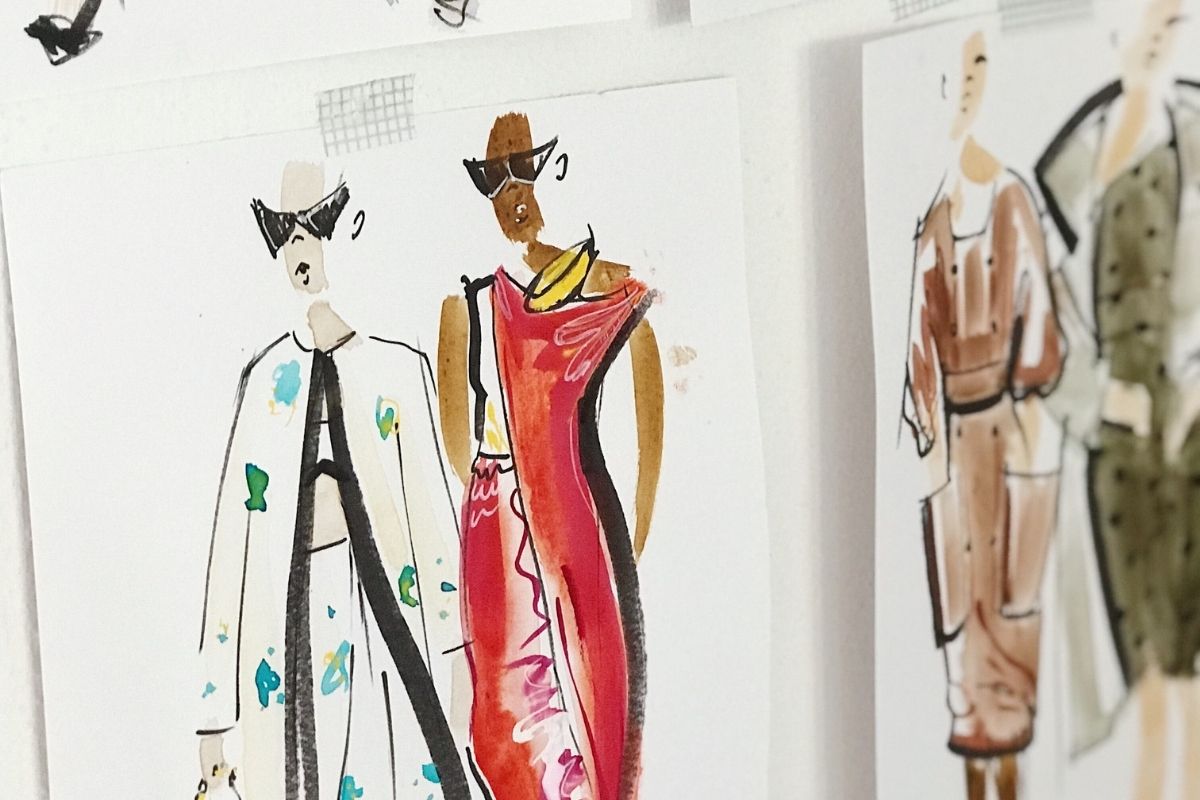Assignments: Your Production Skills
Angela Gao walks us through the importance of correctly fitting clothes with pins to get the look you are trying to achieve in fashion and the fashion business.
“Here we have a new ensemble of samples that just came back from the factory on our beautiful model Agnes,” says Angela Gao. “This is a jersey top, it’s very loose on her. This is the importance of fitting. To fit the garment is basically to make it fit your customer size, or the model, or the person who’s wearing your garment. The tools that we need are these little pins.”
You should be very careful never to pin the model that you’re depending on. There are specific rules as to where the pins should be pointing and how each seam or placement should be pinned. The reason I’m pinning at the shoulder is the shoulder seam is too low. I’m going to move it up a little bit so it’s actually on the high point of her shoulder.
Now let’s turn her around: the armhole is way too big, says Angela. We’re going to fix it by pinning the side seam a little bit closer together.
“One thing you should be careful to not force the fabric,” says Angela. “It’s a very important skill. Fabric wants to move in a certain direction in a certain way. The pinning should only adjust the size without forcing it.”
After I’ve indicated where the armhole should end, I’m going to start pinning the side seam. I still want the side seam to slant in the a-line shape, so I’m going to pin down the side seam at an angle.
You will finish this process by pinning to the bottom of the hemline. Now, the left side is a much better-fitted vest than the right side, which is still baggy and droopy.
If you’re happy with your fit, then it’s time to use a marker or tailor’s chalk. You’re going to redraw these lines, trace them, trace the pin line in the back, take pictures, and then send the sample garment back to the sample room or a factory.
After that, you would just wait for them to send you a new sample, recheck it, refit to make sure that everything is fitting properly, until to you it’s perfect. Then you can put it into production and have them sent to your customers and your buyers.




